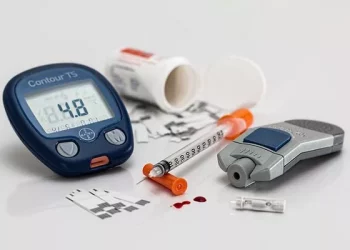Prediabetes is a critical stage in the development of type 2 diabetes, and managing this condition effectively through lifestyle changes, particularly diet, is essential for preventing its progression. One of the most powerful tools in this battle is knowing which foods to avoid. A healthy diet can help regulate blood sugar levels, enhance insulin sensitivity, and support overall metabolic health. On the other hand, certain foods can exacerbate insulin resistance, leading to higher blood glucose levels and an increased risk of developing type 2 diabetes.
In this article, we will explore the foods that are the worst for people with prediabetes. Understanding which foods can negatively affect your health is crucial for making better choices. We will also explain why these foods are harmful and provide alternatives that are better suited for blood sugar control. By eliminating or minimizing the intake of these foods, individuals with prediabetes can take significant steps toward maintaining healthy blood sugar levels and potentially reversing their condition.
Understanding Prediabetes: A Call to Action
Before delving into the foods that should be avoided, it is important to briefly explain what prediabetes is and why managing it is so important. Prediabetes is a condition where blood sugar levels are higher than normal, but not high enough to be diagnosed as type 2 diabetes. However, without intervention, prediabetes can lead to full-blown type 2 diabetes, which can result in serious health complications such as heart disease, kidney damage, nerve damage, and vision problems.
The good news is that prediabetes is reversible with the right lifestyle changes, particularly dietary modifications. By understanding which foods contribute to poor blood sugar control and which can help, individuals can significantly reduce the risk of developing type 2 diabetes.
The Role of Diet in Managing Prediabetes
Diet plays a central role in managing prediabetes. The goal is to keep blood sugar levels stable and avoid large fluctuations, particularly spikes in blood glucose. A balanced, nutrient-dense diet can help reduce insulin resistance, a key factor in the development of diabetes. However, some foods, particularly those high in refined carbohydrates, sugars, and unhealthy fats, can make blood sugar levels unstable and contribute to further insulin resistance.
For individuals with prediabetes, the focus should be on choosing foods that have a low glycemic index (GI), are high in fiber, and are rich in healthy fats and lean proteins. At the same time, avoiding or limiting foods that are highly processed, sugary, or refined is just as crucial for controlling blood sugar levels and preventing the progression to type 2 diabetes.
Worst Foods for Prediabetes: Why They Should Be Avoided
1. Sugary Beverages
One of the worst culprits for elevating blood sugar levels are sugary beverages. These include sodas, sweetened fruit juices, energy drinks, and even some flavored waters. These drinks contain high amounts of sugar that quickly flood the bloodstream, causing a rapid spike in blood sugar. Since they are liquid, they do not contain fiber or fat to slow down the absorption of sugar, leading to rapid insulin spikes.
Why It’s Harmful: Sugary drinks cause immediate blood sugar spikes, which can worsen insulin resistance. Over time, regular consumption can contribute to weight gain, a key risk factor for developing type 2 diabetes.
Alternatives: Instead of sugary beverages, opt for water, herbal teas, sparkling water with a squeeze of lemon or lime, or unsweetened iced tea. If you crave something sweet, a small amount of stevia or monk fruit can be used as a natural sweetener.
2. Refined Carbohydrates (White Bread, White Rice, and Pasta)
Refined carbohydrates, such as white bread, white rice, and conventional pasta, are another group of foods to avoid. These foods have been stripped of their fiber and nutrients during processing, leaving behind simple sugars that are quickly digested and absorbed into the bloodstream. This leads to rapid spikes in blood sugar and increased insulin demand.
Why It’s Harmful: Refined carbohydrates have a high glycemic index, meaning they raise blood sugar levels quickly. They also contribute to weight gain, particularly abdominal fat, which further exacerbates insulin resistance.
Alternatives: Whole grain versions of bread, rice, and pasta are better choices. Brown rice, quinoa, whole wheat bread, and pasta made from whole grains contain fiber that slows down sugar absorption, preventing blood sugar spikes.
3. Fried Foods
Fried foods, including French fries, fried chicken, and fried snacks, should be avoided in a diet for prediabetes. These foods are typically high in unhealthy fats, particularly trans fats, which can promote inflammation and worsen insulin resistance. The high-calorie content of fried foods also contributes to weight gain, a significant risk factor for developing type 2 diabetes.
Why It’s Harmful: The trans fats and unhealthy oils used in frying contribute to inflammation, insulin resistance, and weight gain. Excessive intake of fried foods has also been linked to higher risks of heart disease, which is already elevated in individuals with prediabetes.
Alternatives: Grilled, baked, or roasted versions of your favorite foods are healthier alternatives. Try baking or grilling chicken, fish, or vegetables instead of frying them. Use healthy oils like olive oil or avocado oil for cooking.
4. Processed Meats
Processed meats, such as sausages, hot dogs, bacon, and deli meats, are not only high in unhealthy fats and sodium but also contain preservatives and chemicals that have been linked to an increased risk of chronic diseases, including heart disease and diabetes. Processed meats have also been shown to contribute to weight gain and metabolic syndrome, which are closely associated with prediabetes.
Why It’s Harmful: Processed meats are high in saturated fats and sodium, which can increase blood pressure and contribute to insulin resistance. They also contain nitrates and nitrites, which have been linked to an increased risk of chronic diseases.
Alternatives: Choose lean cuts of meat, such as skinless chicken breast or turkey, and limit consumption of processed meats. For a plant-based option, consider tofu, tempeh, or legumes as protein sources.
5. Sweets and Desserts
Cakes, cookies, ice cream, pastries, and other sugary desserts are a major concern for individuals with prediabetes. These foods are loaded with refined sugars, unhealthy fats, and empty calories. They provide little nutritional value but significantly raise blood sugar levels, contributing to insulin resistance.
Why It’s Harmful: Sugary desserts cause rapid blood sugar spikes, leading to insulin resistance. Additionally, the combination of sugar and unhealthy fats promotes weight gain, which further exacerbates metabolic dysfunction.
Alternatives: If you crave something sweet, try fruit-based desserts or desserts made with alternative sweeteners such as stevia or monk fruit. You can also experiment with making healthier desserts at home, using almond flour, coconut flour, and other diabetes-friendly ingredients.
6. Sweetened Breakfast Cereals
Many commercial breakfast cereals are loaded with added sugars and refined grains, making them a poor choice for anyone with prediabetes. These cereals cause quick blood sugar spikes and fail to provide the necessary fiber or protein to help stabilize blood sugar levels throughout the morning.
Why It’s Harmful: Sweetened breakfast cereals are high in refined carbohydrates and sugar, which cause rapid blood sugar spikes. These cereals often lack the fiber and protein necessary for blood sugar stability.
Alternatives: Opt for whole grain cereals with little to no added sugar. Oatmeal, chia pudding, or a whole-grain cereal made with high-fiber ingredients like bran can help provide a more balanced breakfast that keeps blood sugar steady.
7. High-Sodium Foods
Foods that are high in sodium, such as canned soups, processed snacks, and fast food, should be avoided in a prediabetes diet. High sodium intake can contribute to high blood pressure, which is common in individuals with prediabetes and is a significant risk factor for cardiovascular disease.
Why It’s Harmful: High sodium intake can exacerbate hypertension and increase the risk of heart disease, which is already elevated in individuals with prediabetes. Excess sodium also encourages fluid retention, leading to bloating and further insulin resistance.
Alternatives: Choose low-sodium versions of canned foods, soups, and sauces. Cook meals from scratch using fresh ingredients and use herbs and spices to flavor food instead of salt.
8. Full-Fat Dairy Products
Full-fat dairy products, including whole milk, cream, and full-fat cheeses, can be problematic for individuals with prediabetes. These foods are high in saturated fats, which can contribute to insulin resistance and promote the accumulation of visceral fat, increasing the risk of type 2 diabetes.
Why It’s Harmful: Saturated fats found in full-fat dairy products can worsen insulin resistance and increase the risk of metabolic syndrome. These fats can also contribute to weight gain, which is a key risk factor for prediabetes.
Alternatives: Choose low-fat or fat-free dairy options, such as skim milk, low-fat yogurt, and reduced-fat cheeses. For dairy alternatives, try plant-based milks like almond, soy, or oat milk.
Conclusion:
The foods listed above are some of the worst offenders for individuals with prediabetes, as they can lead to increased blood sugar levels, insulin resistance, and weight gain. By eliminating or reducing the consumption of these foods, individuals with prediabetes can significantly improve their health and lower their risk of developing type 2 diabetes.
Instead, focus on a balanced diet that includes whole grains, lean proteins, healthy fats, and plenty of non-starchy vegetables. Regular physical activity, stress management, and adequate sleep are also key components of managing prediabetes effectively. By making these changes, you can take control of your health and work toward reversing prediabetes, ultimately preventing the development of type 2 diabetes.
Related topics:
Can You Eat Eggs if You Have Type 2 Diabetes?
























